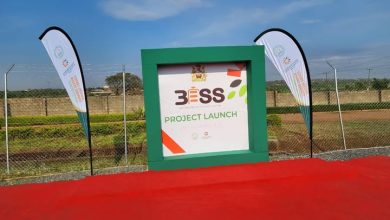Saving irrigation schemes from climate catastrophes
On a battered earth road to Nkhulambe Valley in Phalombe District, bicycles, motorbikes and trucks hauling fresh harvests flash past.
The massive bags of rice, potatoes, cassava, maize and other crops on the move make the southwestern wetland a food basket. But the sightings have waned since March 23 when floods and mudslides caused by Cyclone Freddy across southern Malawi buried irrigated fields in sands and rocks.
Wowo Solar-powered Irrigation Scheme, under reconstruction, was one of the worst hit zones in the vast valley.
The world’s longest-running cyclone scarred the face of Michesi Mountain, leaving a trail of destruction in the floodplain where farmers grew crops two to three times a year.

“The rocks from the hillsides have left the wetland mostly unusable, worsening hunger and poverty,” says irrigation scheme leader Isaac Dickson. “The flash floods shattered canals and the intake, disrupting water supply to the 310-hectare (ha) irrigation scheme along the north bank of Sombani River.
The scheme, designed to benefit 1 580 farming families in the vicinity, was initially budgeted at K3.2 billion. However, the cost has ballooned to almost K12 billion since Cyclone Ana in January 2022, barely three months under construction.
The cyclone disrupted engineering works under the Programme for Rural Irrigation Development (Pride) run by the Department of Irrigation with funding from the International Fund for Agricultural Development (Ifad). The works include a 10ha expansion irrigated by a high-yielding borehole drilled along the riverbank.
“Construction was supposed to be completed in November 2022, but the scheme suffered heavy damages,” says Pride spokesperson Felix Malamula.
The tragedy struck when progress was about 74 percent complete, the publicist states.
“We had to invest more in building back better and smarter so that it can withstand future climate shocks,” says Malamula.
The cyclone also hit new irrigation schemes at Lingoni in Machinga and Matoponi in Zomba, affecting about 2 200 households. It did not spare old irrigation sites.
This exposes the hidden cost of disasters made more frequent and devastating by climate change and environmental degradation.
Irrigation investment is particularly prone because they lie in lowlands along waterways.
Ifad, the United Nations community development accelerator, recommends: “The design of irrigation infrastructure must incorporate climate-resilient factors in the face of hazards such as floods and cyclones. This includes aligning with the Malawi National Disaster Recovery Framework and the Build Back Better and Smarter’ principle.”
Post-disaster assessments by the Government of Malawi and partners show Freddy affected irrigation schemes worth about $45.46 million.
Last December, the Ministry of Agriculture revised the National Irrigation Policy of 2016 to embody emerging realities. The rulebook makes climate-smart strategies pivotal to the establishment and daily operations of the schemes.
“The new policy ensures that irrigation projects earmarked for development are environmentally sound and climate-resilient by encouraging irrigation stakeholders to implement irrigation projects that meet the needs of the present without compromising the ability of future generations to meet their own needs,” says director of irrigation services Godfrey Mwepa.
The shift seeks to safeguard progress in the implementation of the Malawi Irrigation Master Plan of 2015 to develop 116 000ha of the irrigable 407 862ha by 2025. The desired expansion would more than double the developed irrigation sites, estimated at152 000 ha last year.
Policymakers have isolated irrigation as a trusted weapon against hunger and poverty amid climate change, but frequent disasters slow the expansion and progress.
Meanwhile, increased agricultural productivity and commercialisation constitute central pillars of national vision to transform the country into a self-reliant, industrialised middle-income economy by 2063.
“The policy recognises the need to observe environmental safeguards when undertaking irrigation development and management activities. This will enhance benefits and minimise negative impacts,” says Mwepa.
It requires every irrigation activity to comply with the National Environmental Policy, Environmental Management Act and mandatory environmental impact assessment guidelines.
“We want to ensure irrigation development is environmentally sound and consistent with the principles of sustainable development,” says Mwepa.
Section 13 of the Constitution obligates the government to implement environmental protection policies for the good of the population and future generations.
Rice farmer Grace Mukhota says the irrigation under expansion has improved her income and livelihood.
“The rain-fed and irrigated crops help me meet my family’s needs. We stand to gain more if our scheme can withstand devastating floods, mudslides and other harsh effects of climate change,” she says.





